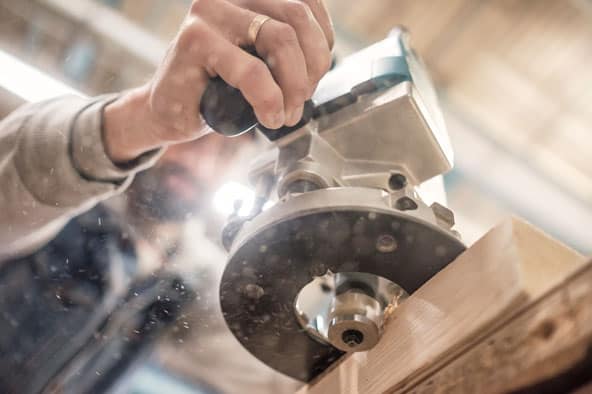First, let’s talk about the dangers. One of the biggest dangers of using a disc sander is the risk of flying debris. When you’re sanding, tiny pieces of wood or metal can come loose and be flung into the air, potentially causing serious injury to your eyes or face. That’s why it’s important to always wear safety glasses when using a disc sander. Don’t think that you’re invincible and that it won’t happen to you – it only takes one tiny piece of debris to cause permanent damage.
Another danger of using a disc sander is the risk of accidentally sanding your fingers or hands. It’s easy to get caught up in the moment and accidentally touch the sanding disc while it’s still spinning, which can cause serious injury. To avoid this, always make sure to keep your hands a safe distance away from the sanding disc while it’s in motion. It’s also a good idea to use a push stick or other tool to help guide the material you’re sanding, rather than relying solely on your hands.
One more danger to keep in mind when using a disc sander is the risk of fire. The friction caused by the sanding disc can create heat, and if you’re sanding something like wood that’s prone to catching fire, it’s important to be extra careful. Make sure to keep a fire extinguisher handy and never leave the sander unattended while it’s in use.
Now that we’ve talked about some of the dangers of using a disc sander, let’s go over some safety recommendations to keep you safe. First and foremost, always wear safety glasses when using a disc sander. It’s a simple step that can prevent serious injury.
Another important safety tip is to always make sure the sander is properly grounded. This will help prevent electrical shocks and other accidents that can occur when using power tools. You should also make sure to read the manual that comes with your sander and follow all of the manufacturer’s instructions for safe use.
When using a disc sander, it’s also a good idea to use a dust collection system to help keep the area clean and reduce the risk of breathing in harmful dust particles. If you don’t have a dust collection system, make sure to wear a respirator or dust mask to protect your lungs.
Finally, it’s important to use the right kind of sanding disc for the material you’re working with. Using the wrong type of disc can not only result in a poor finish, but can also be dangerous. Make sure to read the packaging on your sanding discs carefully and choose the right one for the job.
In conclusion, while a disc sander is a valuable tool to have in your workshop, it’s important to use it safely and be aware of the potential dangers. Always wear safety glasses, keep your hands a safe distance away from the sanding disc, and make sure to properly ground the sander. With these safety recommendations in mind, you can enjoy the benefits of using a disc sander without putting yourself or your workshop in danger. Stay safe out there, my friends!
Cheers,

![]()






